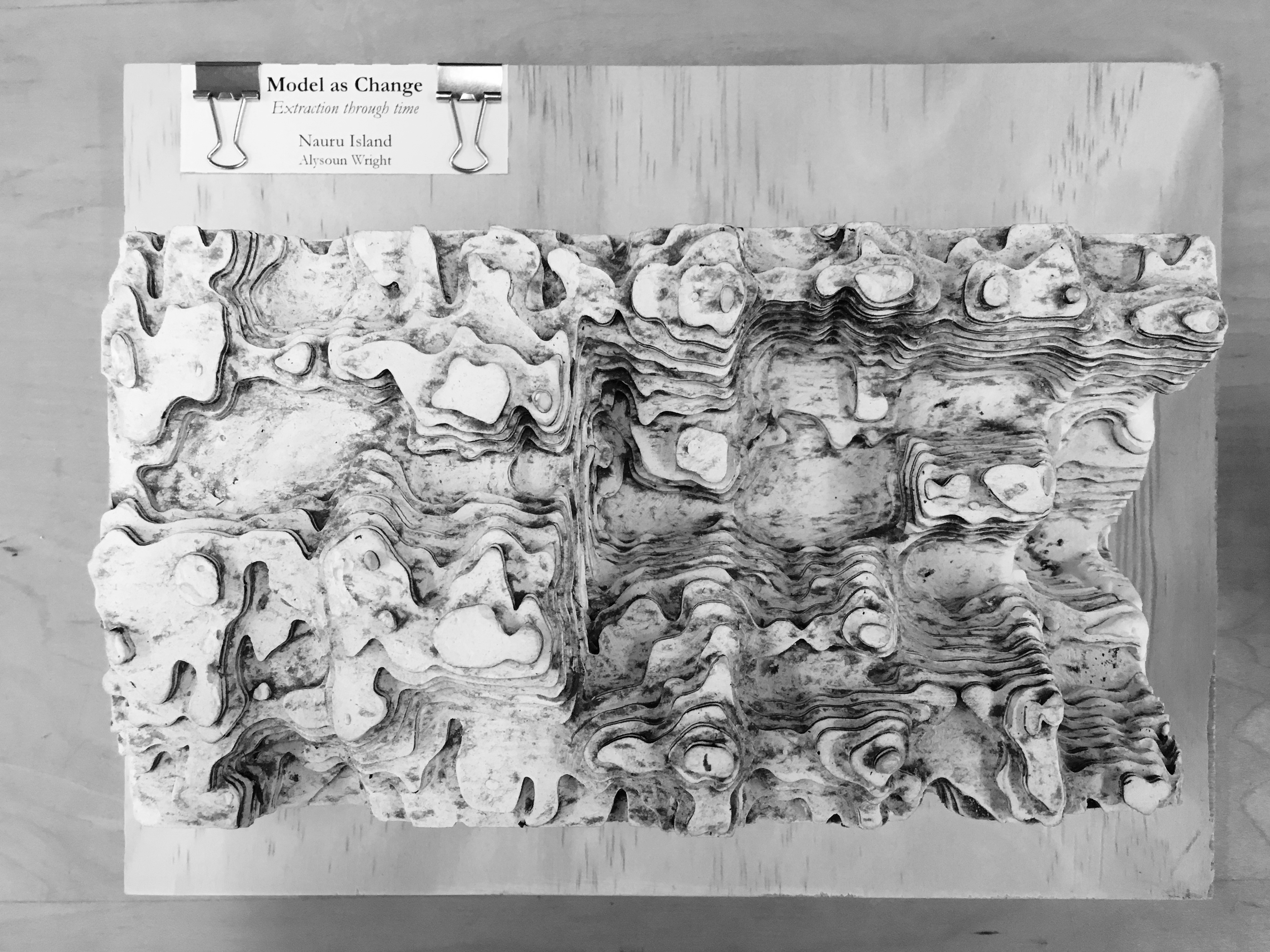Return to Pleasant Island: A study of Nauru Island

by Alysoun Wright (MUP ’21)
Extraction Through Time: Model as Change
Following the discovery of phosphate, over 80% of Nauru Island was strip mined. The resulting landscape is highly degraded and inhospitable.
Extraction Landscape: Model as Force
The extreme slope of the terrain makes plant succession difficult. Due to a lack of vegetative cover, surface water runoff further erodes the landscape and is polluted with high concentrations of dissolved minerals left behind from extraction.
Phosphate + Limestone: Model as Matter
Composite positive and negative model depicting the extracted phosphate and the remaining limestone pinnacle field.
Limestone Pinnacles: Model as Matter
Following phosphate extraction, a jagged field of limestone pinnacles, or a karst, forms a new inhospitable terrain.
Pinnacle Field: Model as Matter
The limestone pinnacle fields form microsites. The slope and aspect of this landscape are extreme, resulting in slow successional growth.
Plant Succession: Model as Change
Over time, the landscape has undergone a slow process of successional growth, and the pinnacle fields have begun to infill with vegetation, soil, and sediment.





